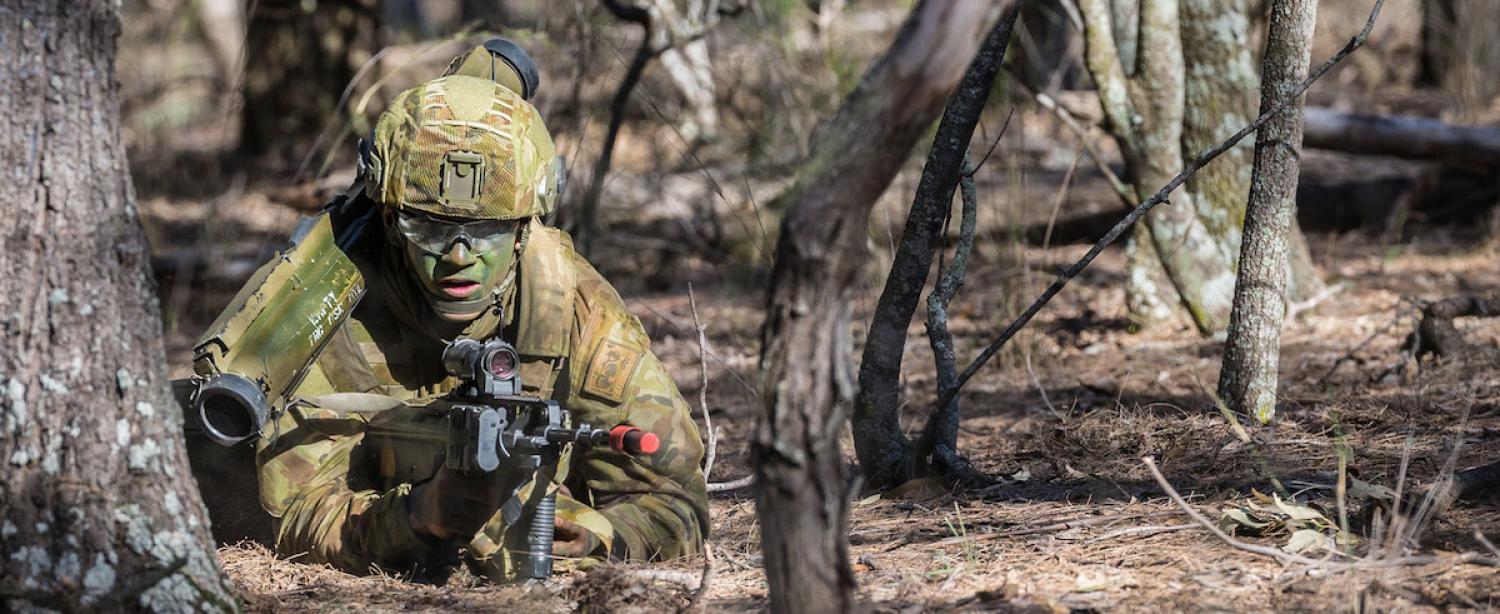The Australian Army is spending up big, announcing a $5.2bn contract for more than 200 Boxers (armoured reconnaissance vehicles from Rheinmetall, as opposed to Boxster of the Porsche variety), while also releasing a tender for another 450 even bigger and better armoured personnel carriers.
While good for Australian industry and the winning states where the manufacturing jobs will be located, a debate is underway in the background over whether these contacts will really give the Australian Defence Force the leading-edge military capability it may need in a future conflict.
The army has a well-defined understanding of the future battlefield it wishes to fight in, but this is less easily related to what the army wishes to achieve fighting as part of a joint ADF.
Some argue that the army’s armour buys are at odds with emerging technology and that a lighter-weight, robotic army might be better. Others assert their doubts are because these contracts are not apparently linked to strategic guidance. Both perspectives fret that using up all the budget now will mean the Army will have little flexibility left to respond to any future strategic environment changes.
In this, it is useful to step back and consider the army’s two-part development program, which has been underway for many years.
Firstly, the army has been steadily getting bigger. In the late-1990s, the army had some 23,000 permanent personnel; the latest budget funds an authorised strength of more than 31,000, a 30% increase.

Secondly, a significant re-equipping of the army is underway, moving the army from being an analogue communications, light infantry force with limited protection and firepower, to becoming a digital, mechanized combined arms team. Driving this is that the army sees the future battlefield as being urban, focused in coastal regions, and against insurgents.
While clearly this echoes the army’s recent Middle East experiences, there is some prescience in this, given last year’s battle for Marawi. The Boxer buy fits all this.
This outline also hints at its shortcomings. The army’s program, while approved by government, is not really directly tied to the latest Defence White Paper strategy. The army has a well-defined understanding of the future battlefield it wishes to fight in, but this is less easily related to what the army wishes to achieve fighting as part of a joint ADF.
Similarly, its program has a strong digital network focus but technology is now moving more into robotics, artificial intelligence, and big data. The new army chief has rightly stressed that the army is in motion with real change underway but its current direction may not be taking it to quite the right place.

The principal alternative seems to be to realign the army program to the strategic guidance set out in the latest White Paper. The big issue that overshadows all is China, which is developing a fearsome capability but whose intent is uncertain.
In the past, war at the operational level in the islands and archipelagic waters north of Australia has been all about battles for airfields and ports so they can be used by friendly air and naval forces to undertake offensive operations. The future looks the same, except now the focus will be on defending airfields and ports from external attack from high quality state forces, not recapturing them. Counter-insurgency doesn’t feature at all.
The notion of defending airfields and ports doesn’t however quite fit either the light screening robot force or urban warfare models. The light forces as envisaged are too specialised and context specific while it seems improbable Australia would be involved in future urban warfare in any China scenario.

Of course, urban warfare might be very important again if ISIS re-emerges (as seems likely) or war with Iran breaks out. Both situations, however, would be wars of choice in a region the White Paper deems of lesser importance. Moreover, in a Trumpian world, Australia’s participation may be uncertain and so should arguably not drive force development plans.
Defending airfield and ports would be a considerable change. Notions of manoeuvre through the archipelago involving amphibious assaults would be replaced by concepts of limited area defence involving multi-domain operations. For example, the army’s air and missiles defence capabilities would need to be boosted considerably, and the idea of the army operating coastal defence anti-ship missiles might be advanced. (This is similar to the ideas of some young-turks from the US Marines of deploying forces before a conflict starts to defend vital small islands and deter conflict.)
The airfield and port defence concept also plays to some real army strengths: persistence and regional relationship building. It is a concept that would need deep embedding in peacetime to be able to rapidly implemented in crisis.
It also overcomes some real problems. The army’s mechanised force plans carry big deployment and logistic challenges. These might make implementation impractical in a contested environment. Operating from a fixed location and being able to get there “first with the most” makes best use of the ADF’s limited deployment capabilities including its vulnerable small amphibious and sealift force.
In this, emerging technology may work in Australia’s favour. A small land force equipped with the latest semi-autonomous systems might have much greater combat power than its personnel numbers might suggest. It might be time to ditch ageing concepts and embrace the future - and what the White Paper has set out.


